Scuba diving is more than just a recreational activity; it’s a gateway to an incredible underwater world filled with vibrant marine life and breathtaking landscapes. For beginners, the prospect of diving can evoke a mix of excitement and apprehension. However, with the right knowledge and preparation, diving can be a safe and exhilarating experience. This guide aims to demystify the basics of scuba diving, covering everything from essential equipment to safety tips and certification. Whether you dream of exploring coral reefs, swimming with sea turtles, or simply enjoying the serenity of being underwater, understanding the fundamentals will help you embark on this adventure with confidence. So, let’s dive into the essential elements that every beginner needs to know to make their first dive a memorable one!
What is Scuba Diving?
Scuba diving is an exhilarating underwater activity that allows individuals to explore the depths of oceans, lakes, and rivers while equipped with a self-contained underwater breathing apparatus (scuba). This gear enables divers to breathe while submerged, offering them the freedom to swim and discover the underwater environment without the limitations of holding their breath. The term “scuba” is derived from the acronym for “Self-Contained Underwater Breathing Apparatus,” which accurately describes the equipment divers use.
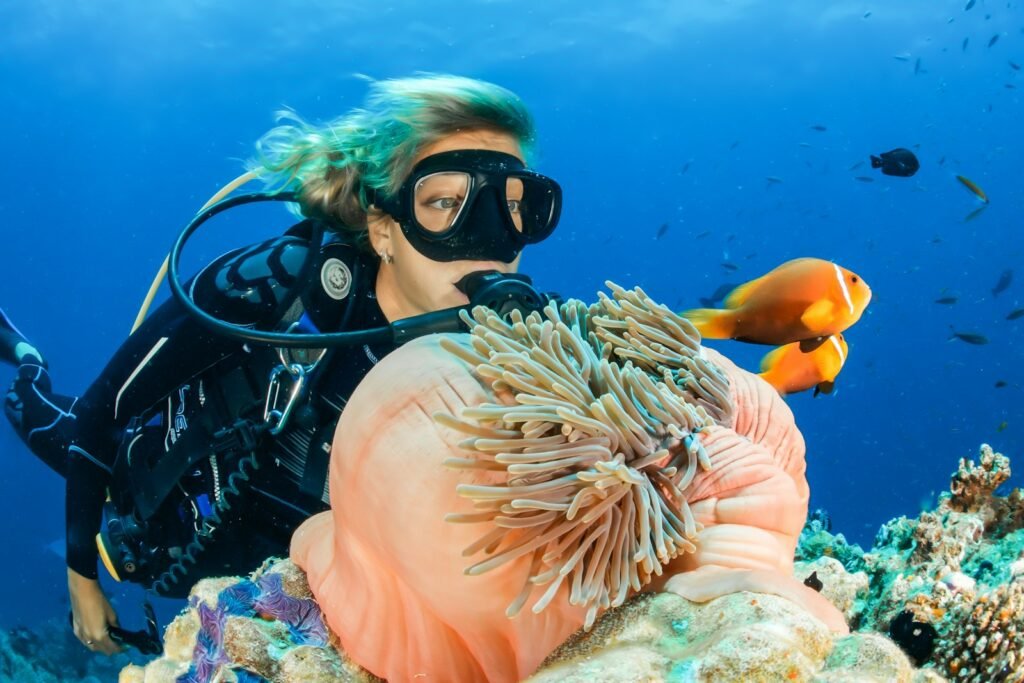
Historically, scuba diving has evolved significantly from its early beginnings. The origins of underwater exploration date back to ancient times when divers used simple breathing tubes to access underwater resources. Modern scuba diving, as we know it, began to take shape in the mid-20th century with the development of reliable breathing apparatuses and safety protocols. Today, it is a popular sport enjoyed by millions worldwide, with countless dive sites showcasing diverse ecosystems and geological formations.
One of the primary distinctions between scuba diving and snorkeling is the depth and duration of the experience. While snorkeling typically allows individuals to float on the surface and observe marine life without going deep, scuba diving offers the opportunity to dive to significant depths, often ranging from 30 to over 100 feet. This opens up a world of vibrant coral reefs, shipwrecks, and unique aquatic species that are inaccessible to snorkelers.
Engaging in scuba diving not only provides the thrill of adventure but also delivers numerous physical and psychological benefits. Physically, diving improves cardiovascular health, enhances flexibility, and builds strength as divers navigate through water. Psychologically, the experience promotes relaxation, reduces stress, and fosters a deep connection with nature. Many divers report a sense of peace and mindfulness while underwater, allowing them to escape the hustle and bustle of daily life.
In summary, scuba diving is a captivating activity that blends adventure with exploration. It opens doors to new experiences, connecting individuals to the wonders of the underwater world. As you embark on your scuba diving journey, understanding its origins, benefits, and differences from snorkeling will enhance your appreciation for this remarkable sport.
Essential Scuba Diving Equipment
Diving into the underwater world requires the right gear to ensure safety and comfort. Understanding the essential scuba diving equipment is crucial for beginners, as it not only enhances the experience but also contributes to safety during dives. Below are the key components every diver should familiarize themselves with.
Mask and Snorkel
A well-fitted mask is essential for clear vision underwater. It creates an air pocket in front of the eyes, allowing divers to see clearly while submerged. When choosing a mask, look for one that fits snugly against your face without leaving any gaps. The lens should be made of tempered glass for durability and scratch resistance. Paired with the mask, a snorkel allows divers to breathe comfortably at the surface without lifting their heads out of the water. Opt for a snorkel with a purge valve for easy clearing of water.
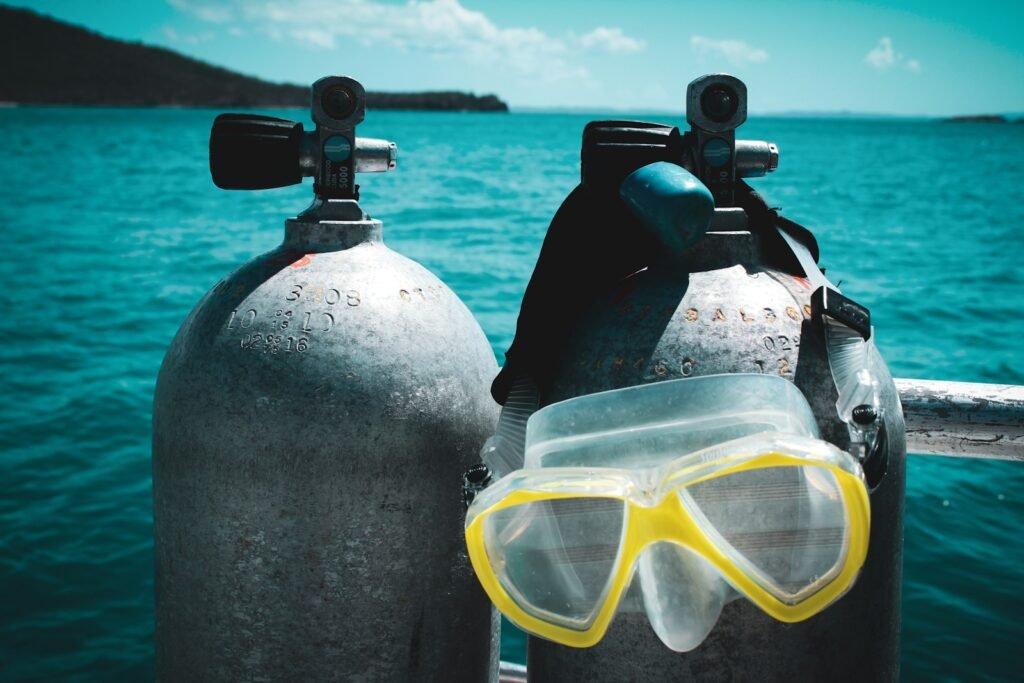
Fins
Fins are crucial for propulsion and maneuverability underwater. They come in various styles, including open-heel and full-foot designs. Open-heel fins are often used with booties, while full-foot fins are designed for bare feet. When selecting fins, consider your dive environment and personal comfort. A good pair of fins will allow you to swim efficiently, reducing fatigue and making your dives more enjoyable.
Wetsuits and Drysuits
Protecting your body from cold water is essential for comfort and safety. Wetsuits provide insulation by trapping a thin layer of water against your skin, which warms up with your body heat. They come in varying thicknesses, suitable for different water temperatures. For colder environments, a drysuit is recommended, as it keeps you completely dry and insulated. Choosing the right suit depends on the water temperature and your personal comfort level.
BCD (Buoyancy Control Device)
The Buoyancy Control Device (BCD) is a critical piece of equipment that allows divers to control their buoyancy while underwater. It is a vest that holds the tank and features adjustable air bladders. By adding or releasing air from the BCD, divers can achieve neutral buoyancy, which is essential for hovering and avoiding damaging delicate marine environments. A well-fitted BCD enhances comfort and control, making it easier to navigate underwater.
Regulator and Tank
The regulator is the device that delivers air from your tank to you while you dive. It reduces the high pressure from the tank to a breathable level. A quality regulator is vital for safety and comfort, so it’s important to choose one that fits well and operates smoothly. The tank, typically made of aluminum or steel, stores the compressed air you’ll use during your dive. Understanding how to properly use and maintain your regulator and tank is essential for any diver.
Dive Computer
A dive computer is a sophisticated device that monitors depth, time, and ascent rates. It helps divers stay within safe limits, preventing issues such as decompression sickness. Some dive computers also track no-decompression limits, making them invaluable for planning and executing safe dives. Familiarizing yourself with how to use a dive computer is crucial, as it enhances your safety and allows for better dive management.
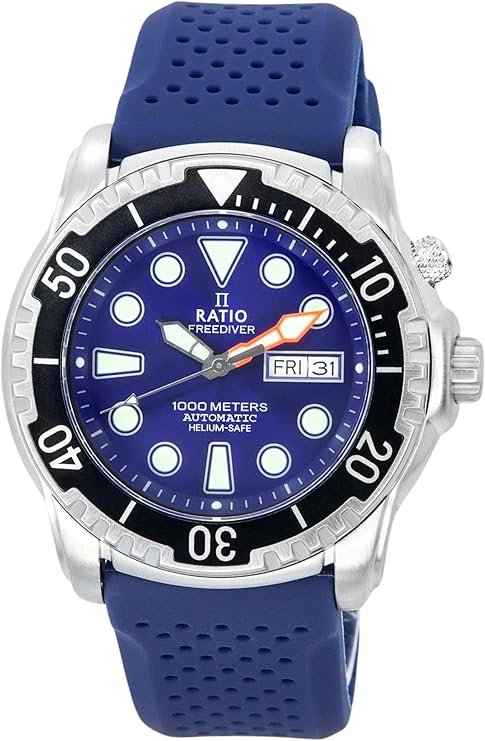
Accessories
In addition to the main equipment, various accessories can enhance your diving experience. Items like underwater cameras allow you to capture the beauty of the underwater world, while dive knives can be useful for safety. A surface marker buoy (SMB) is essential for signaling your presence at the surface and enhancing safety during ascent.
In summary, understanding essential scuba diving equipment is fundamental for every beginner. Each piece of gear plays a specific role in ensuring safety, comfort, and an enjoyable diving experience. As you prepare for your first dive, investing time in learning about your equipment will help you feel more confident and ready to explore the wonders beneath the waves.
Understanding Scuba Diving Certification
Scuba diving certification is a critical step for anyone looking to explore the underwater world safely and responsibly. It signifies that you have received proper training in the skills and knowledge necessary for safe diving. Numerous organizations offer certification programs, with the most recognized being the Professional Association of Diving Instructors (PADI), National Association of Underwater Instructors (NAUI), and Scuba Schools International (SSI). Each agency provides a structured curriculum designed to prepare divers for real-world scenarios.
The certification process typically involves several key components. First, you’ll participate in classroom sessions where you’ll learn about essential topics such as dive physics, physiology, equipment usage, and safety protocols. Understanding how pressure affects the body and how to equalize your ears are fundamental lessons that will enhance your diving experience and safety.
Following the classroom instruction, you’ll progress to confined water training, often conducted in a swimming pool. Here, you’ll practice essential skills under the guidance of a certified instructor. These skills include mask clearing, buoyancy control, and regulator retrieval, among others. Confined water training is vital, as it allows you to become comfortable with your equipment and build confidence before venturing into open water.

Once you’ve completed the classroom and confined water training, the final step is to participate in open water dives. During these dives, you’ll apply the skills you’ve learned in a real-world environment. Instructors will assess your abilities and provide feedback to ensure you are competent and safe. Successfully completing the open water dives is the culmination of your training and leads to certification.
Certification levels vary, with the most common starting point being the Open Water Diver certification. This allows you to dive independently, typically to a maximum depth of 60 feet (18 meters), provided you dive with a buddy or under the supervision of a certified instructor. As you gain experience and confidence, you can pursue advanced certifications that allow for deeper dives, specialty training, and even instructor status.
Obtaining a scuba diving certification not only enhances your skills but also promotes responsible diving practices. Certified divers are educated about environmental conservation, learning the importance of protecting marine ecosystems. This knowledge fosters a deeper appreciation for the underwater world and encourages divers to act as stewards of the ocean.
In conclusion, scuba diving certification is an essential milestone for anyone interested in the sport. It equips you with the knowledge, skills, and confidence needed to explore the ocean safely. By choosing a reputable certification agency and committing to thorough training, you’ll ensure that your diving experiences are enjoyable and secure, paving the way for countless adventures in the underwater realm.
Safety Tips for Beginners
Safety is paramount in scuba diving, especially for beginners. Understanding and adhering to essential safety practices can significantly enhance your diving experience and minimize risks. Here are some crucial safety tips every novice diver should keep in mind:
Pre-Dive Safety Checks
Before entering the water, it’s essential to conduct thorough pre-dive safety checks. This typically involves a buddy check, where you and your dive partner inspect each other’s gear. Ensure that your equipment is functioning correctly, including your tank pressure, regulator, BCD, and dive computer. This mutual check fosters teamwork and helps catch any potential issues before you start your dive.
Equalization Techniques
As you descend, pressure increases, and it’s vital to equalize the pressure in your ears to prevent discomfort or injury. Learning effective equalization techniques, such as the Valsalva maneuver, can make a significant difference. This involves pinching your nose and gently blowing while keeping your mouth closed. Practice equalizing early and often during your descent to ensure a comfortable experience.
Understanding Dive Tables and Computers
Familiarizing yourself with dive tables and dive computers is essential for safe diving. Dive tables provide information on no-decompression limits and safe ascent rates based on your depth and time underwater. Similarly, a dive computer automates this process, monitoring your depth and time in real-time. Understanding how to read and interpret this data is crucial for planning safe dives and avoiding decompression sickness
Monitoring Air Supply
Keeping an eye on your air supply is vital during your dive. Regularly check your tank pressure to ensure you have enough air for your planned ascent. A good rule of thumb is to begin your ascent with at least 500 psi remaining. Always communicate with your buddy about your air levels, and be prepared to share air if necessary
Ascent and Descent Procedures
Adhering to proper ascent and descent procedures can prevent accidents. Descend slowly and maintain a steady pace, allowing your body to acclimate to the changing pressure. When ascending, follow the recommended ascent rate of no more than 30 feet (9 meters) per minute. Make a safety stop at 15 feet (5 meters) for three minutes to allow excess nitrogen to safely leave your body, reducing the risk of decompression sickness.
Emergency Procedures
Being prepared for emergencies is a crucial aspect of diving safety. Familiarize yourself with common emergency scenarios, such as out-of-air situations or equipment failure. Always carry a dive knife or cutting tool for potential entanglements. Discuss emergency procedures with your dive buddy before the dive, ensuring you both know how to respond in case of an incident.
Stay Within Your Limits
As a beginner, it’s vital to know your limits and dive within them. Choose dive sites suitable for your skill level and avoid challenging conditions like strong currents or low visibility until you gain more experience. Diving with a knowledgeable instructor or experienced divers can also provide guidance and enhance your confidence.
Stay Hydrated and Rested
Diving can be physically demanding, so staying hydrated and well-rested before your dives is essential. Dehydration can increase the risk of decompression sickness, so drink plenty of water before and after diving. Avoid alcohol and heavy meals before a dive, as these can impair your performance and judgment.
In summary, prioritizing safety as a beginner scuba diver is essential for a positive experience. By conducting thorough pre-dive checks, understanding your equipment, and adhering to safe diving practices, you can significantly reduce risks. Remember, diving is meant to be enjoyable and rewarding, so taking the time to prioritize safety will allow you to fully appreciate the wonders of the underwater world.
Planning Your First Dive
Planning your first scuba dive is an exciting yet crucial step in ensuring a successful and enjoyable experience. Proper preparation not only enhances safety but also builds confidence as you venture into the underwater world. Here are some essential considerations for planning your inaugural dive.
Choosing a Dive Location
Selecting the right dive site is paramount for beginners. Look for locations known for their calm waters, clear visibility, and minimal currents. Many dive shops offer guided dives specifically designed for novice divers, often featuring shallow reefs or protected areas. Research potential dive sites and consult with local dive operators who can recommend suitable locations based on your skill level.
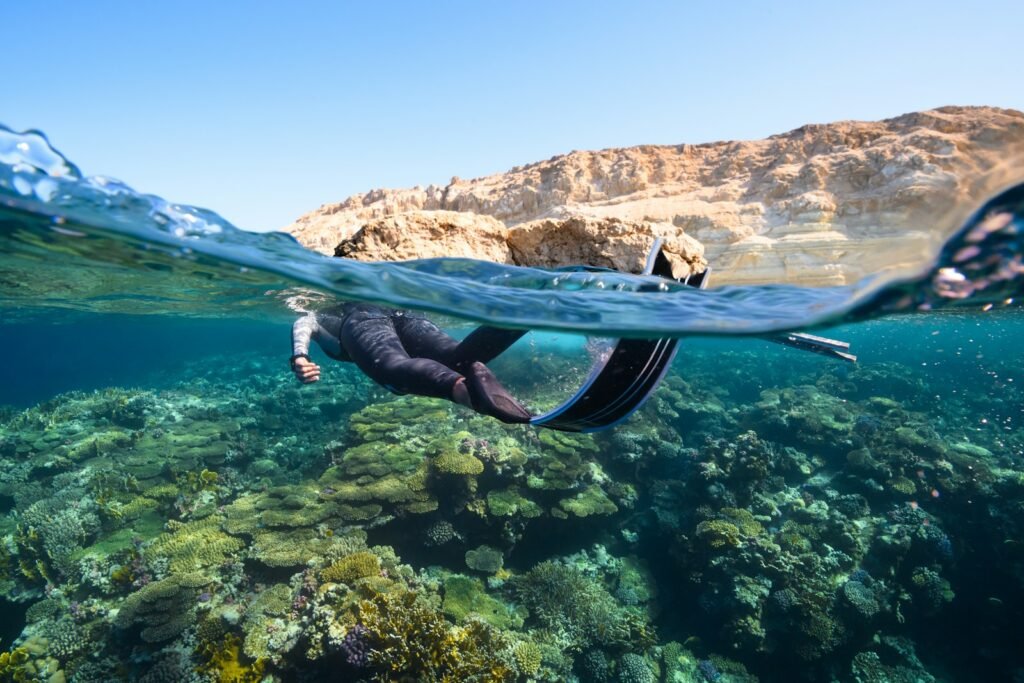
Understanding Dive Conditions
Before heading out, it’s essential to check the dive conditions for your chosen site. Factors like water temperature, visibility, current strength, and weather conditions can significantly impact your experience. Understanding these variables will help you prepare adequately and choose the appropriate gear. For example, if the water is colder than expected, ensure you have the right wetsuit thickness to stay comfortable.
Setting a Dive Plan
A well-structured dive plan is essential for a safe and organized dive. Discuss your plan with your dive buddy or instructor, covering key aspects such as maximum depth, dive duration, and entry and exit points. Decide on a communication system, such as hand signals, to ensure clear communication underwater. Establishing a turnaround point is also crucial; if you reach this point before your predetermined time, it’s time to ascend and return.
Familiarizing Yourself with Equipment
Before your dive, take time to familiarize yourself with your equipment. Practice using your mask, fins, BCD, and regulator in shallow water to ensure comfort and functionality. Understanding how to operate your dive computer or watch is also vital, as it will help you monitor depth and time during the dive. Being comfortable with your gear will alleviate anxiety and allow you to focus on the underwater experience.

Reviewing Safety Protocols
Revisiting safety protocols is a crucial aspect of dive planning. Ensure that both you and your dive buddy are familiar with emergency procedures, including what to do in case of an out-of-air situation or equipment malfunction. Agree on a plan for ascending together, including the recommended ascent rate and safety stop. Familiarity with these procedures will enhance your confidence and preparedness.
Choosing the Right Time to Dive
Timing is an important consideration when planning your dive. Early mornings often provide the best visibility and calm conditions, while afternoons can bring more boat traffic and changing weather. If you’re diving with a group, ensure everyone is on the same schedule to maintain safety and organization.
In summary, planning your first dive involves careful consideration of various factors, from choosing an appropriate dive site to familiarizing yourself with your equipment. By setting a detailed dive plan and reviewing safety protocols, you can enhance your confidence and enjoy a memorable underwater adventure. Embrace the excitement of your first dive, and remember that preparation is key to a safe and enjoyable experience.
What to Expect on Your First Dive
Embarking on your first scuba dive is a thrilling experience, filled with anticipation and excitement. Understanding what to expect can help ease any nerves and enhance your enjoyment. Here’s a glimpse of the sensations and experiences you’ll encounter during your inaugural underwater adventure.
Entering the Water
As you prepare to enter the water, you may feel a mixture of excitement and apprehension. Take a moment to breathe deeply and focus on the experience ahead. If you’re entering from a boat, listen carefully to your instructor’s brief on how to safely enter the water. You may perform a giant stride or a backroll, depending on the dive site. If you’re entering from the shore, remember to walk in slowly, maintaining your balance as you adjust to the weight of your gear.
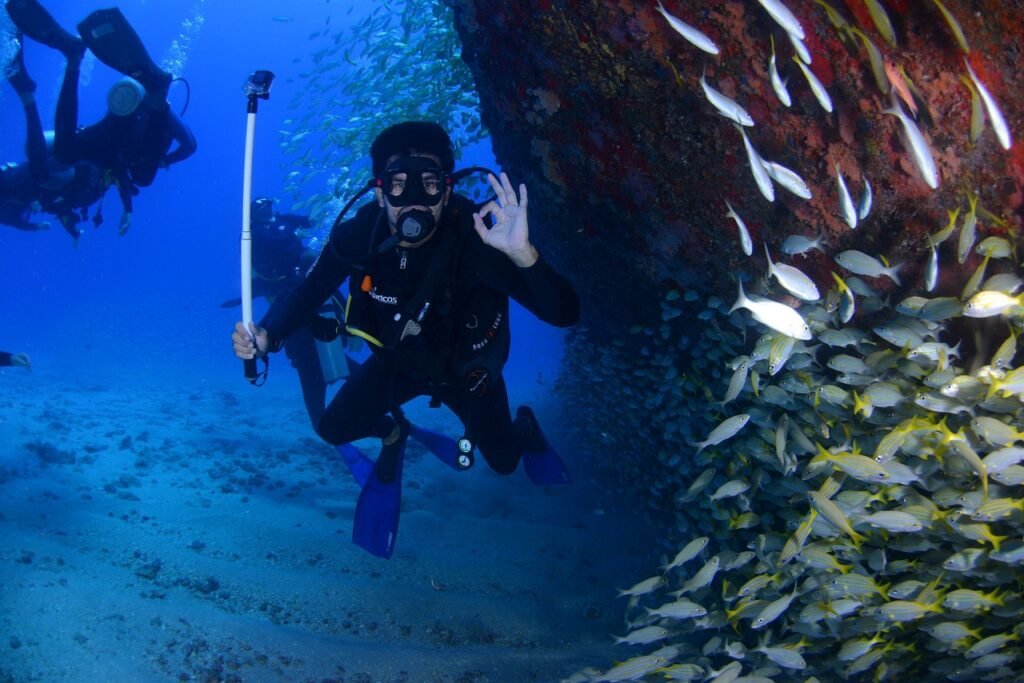
Descending into the Depths
As you begin your descent, the initial feeling of weightlessness can be both exhilarating and disorienting. Keep your eyes on your dive buddy or instructor, as they will guide you. Remember to equalize your ears frequently to prevent discomfort from pressure changes. Many beginners find the descent to be a moment of wonder as they leave the surface world behind and transition into the serene underwater environment.
Experiencing Buoyancy
Once you reach your desired depth, you will experience the effects of buoyancy control. Achieving neutral buoyancy—where you neither sink nor float—allows you to move gracefully through the water. It’s a skill that requires practice, but don’t worry; your instructor will assist you. Take your time to get comfortable with the feeling, adjusting your BCD as needed to maintain buoyancy.
Observing Marine Life
One of the most rewarding aspects of scuba diving is encountering marine life in its natural habitat. As you explore, keep your eyes peeled for colorful fish, vibrant corals, and unique underwater features. You may encounter curious sea turtles, playful dolphins, or even the majestic movements of larger species like rays or sharks. Remember to respect the marine environment—avoid touching or disturbing the wildlife and maintain a safe distance.
Communicating Underwater
Underwater communication is an essential part of the diving experience. Since verbal communication is impossible, divers use hand signals to convey messages. Familiarize yourself with basic signals, such as indicating “OK,” “not OK,” and “ascend.” Your dive instructor will demonstrate these signals, so pay close attention. Good communication with your buddy is key to ensuring a safe and enjoyable dive.

Feeling a Sense of Peace
Many divers describe the underwater experience as tranquil and meditative. The sounds of the ocean, combined with the sensation of weightlessness, can create a profound sense of calm. Take time to soak in the beauty of your surroundings and appreciate the moment. This is a unique opportunity to connect with nature in a way that few people experience.
Ascending and Reflecting
As your dive comes to an end, your instructor will guide you through the ascent process. Follow the established ascent rate and perform a safety stop to allow your body to off-gas any excess nitrogen. Once you reach the surface, the exhilaration of your first dive will likely hit you. Share your experiences with your dive buddy, reflecting on the incredible sights and sensations you encountered
In summary, your first scuba dive is an unforgettable adventure filled with awe and discovery. By understanding what to expect, you can approach the experience with confidence and excitement. Embrace the journey into the underwater world, and remember that each dive brings new opportunities for exploration and connection with marine life.
Post-Dive Procedures
After completing your first scuba dive, it’s essential to follow proper post-dive procedures to ensure safety and maximize your diving experience. These steps help you reflect on the dive, maintain your equipment, and prepare for future adventures.
Logging Your Dive
One of the most important post-dive tasks is logging your dive. This involves recording essential details such as the date, dive location, depth, duration, and any notable observations. Keeping a detailed log helps track your experience and progress as a diver. Over time, these records will serve as valuable references, allowing you to reflect on your growth and revisit memorable dives.
Equipment Maintenance
Properly maintaining your scuba gear is crucial for its longevity and performance. After each dive, rinse your equipment with fresh water to remove salt, sand, and any debris. Pay special attention to your regulator, BCD, and wetsuit, ensuring they are thoroughly cleaned and dried. Store your gear in a cool, dry place to prevent damage and prolong its lifespan. Regularly inspect your equipment for any signs of wear or malfunction, and consider having it serviced annually by a professional.
Hydration and Rest
Diving can be physically demanding, so it’s important to hydrate and replenish your body after a dive. Drink plenty of water to help your body recover and reduce the risk of dehydration. Additionally, ensure you get adequate rest, as diving can be tiring, especially for beginners. Listen to your body; if you feel fatigued, take the time to relax and recharge before your next dive.
Sharing Experiences
Discussing your dive with fellow divers or instructors can provide valuable insights and enhance your learning experience. Sharing stories about what you saw and learned can deepen your appreciation for the underwater world. Engaging in conversations with more experienced divers can also offer tips and advice for future dives, helping you build confidence and knowledge.
In summary, following post-dive procedures is essential for every diver. Logging your dive, maintaining your equipment, staying hydrated, and sharing experiences contribute to a well-rounded and enjoyable diving journey. By incorporating these practices into your routine, you’ll enhance your skills and ensure that each dive is a memorable and safe adventure.
Summary of Scuba Diving Basics
Scuba diving opens up a fascinating world beneath the waves, offering a unique blend of adventure, exploration, and connection with nature. As you embark on your diving journey, understanding the basics—from essential equipment and safety procedures to proper dive planning—will set you up for success and enjoyment. The knowledge you gain through certification and practice not only enhances your skills but also fosters a deep appreciation for the underwater environment.
Your first dive will likely be a transformative experience, filled with awe as you encounter vibrant marine life and stunning underwater landscapes. Remember, each dive is an opportunity to learn and grow as a diver, and prioritizing safety and preparation will ensure that your experiences are both enjoyable and secure.
As you continue your diving adventures, embrace the thrill of exploration while being mindful of the responsibility that comes with it. Protecting marine ecosystems and practicing sustainable diving habits will help preserve the beauty of our oceans for future generations. So gear up, take the plunge, and immerse yourself in the wonders of the underwater world—an adventure awaits you beneath the surface!









Post Comment